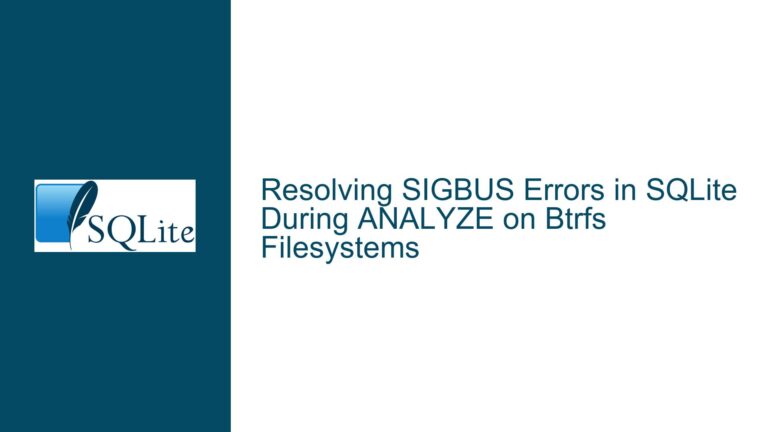Synchronizing Data from SQL Server to SQLite: Challenges and Solutions
Replicating SQL Server Express Data to SQLite with Hourly Updates
Replicating data from SQL Server Express to SQLite and ensuring hourly updates is a task that involves understanding the intricacies of both database systems, their differences, and the tools available to bridge the gap between them. SQL Server Express is a robust, feature-rich relational database management system (RDBMS) designed for larger-scale applications, while SQLite is a lightweight, serverless, and self-contained database engine ideal for smaller applications or embedded systems. The challenge lies in synchronizing data between these two systems, which have fundamentally different architectures and capabilities.
SQL Server Express supports complex queries, stored procedures, triggers, and advanced data types, whereas SQLite is more limited in scope but excels in portability and simplicity. The primary goal is to replicate the schema and data from SQL Server Express to SQLite and then implement a mechanism to update the SQLite database hourly with changes from SQL Server Express. This process requires careful planning, as direct replication tools between these two systems are scarce, and manual or semi-automated solutions are often necessary.
The replication process involves two main steps: initial data transfer and incremental updates. The initial data transfer requires exporting the schema and data from SQL Server Express and importing it into SQLite. Incremental updates involve identifying changes in SQL Server Express (such as new, updated, or deleted records) and applying them to SQLite. This can be achieved through a combination of scripting, intermediate file formats like CSV, and scheduling mechanisms to ensure hourly updates.
Challenges in Schema and Data Type Compatibility
One of the most significant challenges in synchronizing data between SQL Server Express and SQLite is the difference in schema and data type compatibility. SQL Server Express supports a wide range of data types, including advanced types like DATETIME2, NVARCHAR(MAX), and XML, which are not natively supported in SQLite. SQLite, on the other hand, uses a more simplified type system with basic types like TEXT, INTEGER, REAL, and BLOB. This discrepancy can lead to data loss or corruption if not handled properly during the replication process.
For example, SQL Server Express’s DATETIME2 type stores date and time with high precision, while SQLite’s TEXT type stores dates as strings in the format YYYY-MM-DD HH:MM:SS.SSS. If the replication process does not account for this difference, the precision of the datetime values may be lost. Similarly, SQL Server Express’s NVARCHAR(MAX) type can store large Unicode strings, while SQLite’s TEXT type has a default limit of 1,000,000,000 bytes. Exceeding this limit during replication can result in truncation or errors.
Another challenge is the difference in schema definitions. SQL Server Express supports features like foreign key constraints, indexes, and triggers, which may not have direct equivalents in SQLite. For instance, SQLite does not enforce foreign key constraints by default, and enabling them requires setting the PRAGMA foreign_keys command. Additionally, SQLite’s indexing capabilities are more limited compared to SQL Server Express, which can impact query performance after replication.
To address these challenges, the replication process must include a data transformation step to convert SQL Server Express data types and schema definitions into formats compatible with SQLite. This may involve truncating strings, converting datetime values to strings, and simplifying schema definitions to match SQLite’s capabilities. Additionally, the replication process should include validation steps to ensure data integrity and consistency between the two databases.
Implementing CSV-Based Data Transfer and Scripted Synchronization
A practical approach to synchronizing data from SQL Server Express to SQLite involves using CSV files as an intermediate format and scripting the transfer process. CSV files are a universal format that can be easily generated from SQL Server Express and imported into SQLite. This method provides a flexible and platform-independent way to transfer data between the two systems.
The first step is to export the data from SQL Server Express into CSV files. This can be done using SQL Server Management Studio (SSMS) or a command-line tool like bcp (Bulk Copy Program). The export process should include all tables and their data, as well as any necessary transformations to ensure compatibility with SQLite. For example, datetime values should be converted to strings, and large text fields should be truncated if necessary.
Once the data is exported to CSV files, the next step is to import it into SQLite. This can be done using the SQLite Command Line Shell (sqlite3) or a custom script written in a programming language like Python, PowerShell, or Bash. The import process should create the necessary tables in SQLite and load the data from the CSV files. If the schema definitions differ between SQL Server Express and SQLite, the script should include steps to modify the schema as needed.
For incremental updates, a similar process can be used to identify changes in SQL Server Express and apply them to SQLite. This can be achieved by querying SQL Server Express for records that have been inserted, updated, or deleted since the last synchronization and exporting these changes to CSV files. The script should then import the changes into SQLite, updating or deleting records as necessary. To ensure hourly updates, the script can be scheduled using a task scheduler or cron job.
While this approach is effective, it has some limitations. CSV files do not support complex data types or relationships, so the replication process may lose some fidelity. Additionally, the scripted approach requires careful error handling to ensure data consistency and prevent corruption. For example, if the script fails during the import process, it should be able to recover and resume without duplicating or losing data.
To mitigate these limitations, the replication process should include logging and validation steps. The script should log each step of the process, including the export and import of data, and validate the results to ensure data integrity. For example, after importing data into SQLite, the script should compare the row counts and checksums of the source and target tables to ensure they match. If discrepancies are found, the script should raise an alert and halt the synchronization process until the issue is resolved.
In conclusion, synchronizing data from SQL Server Express to SQLite requires a combination of data transformation, scripting, and scheduling. By using CSV files as an intermediate format and implementing robust error handling and validation, it is possible to achieve reliable and efficient data replication between these two systems. However, the process requires careful planning and testing to ensure data integrity and compatibility.






